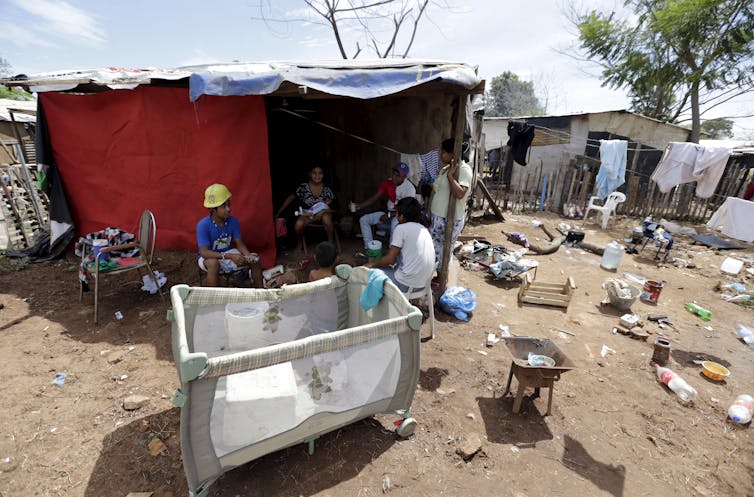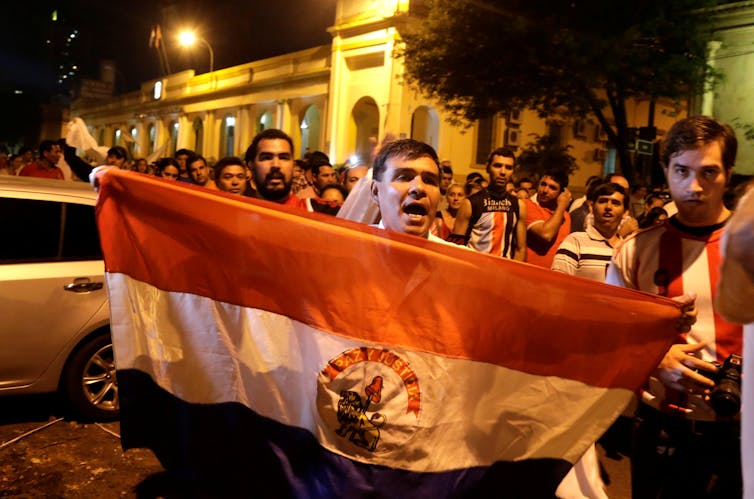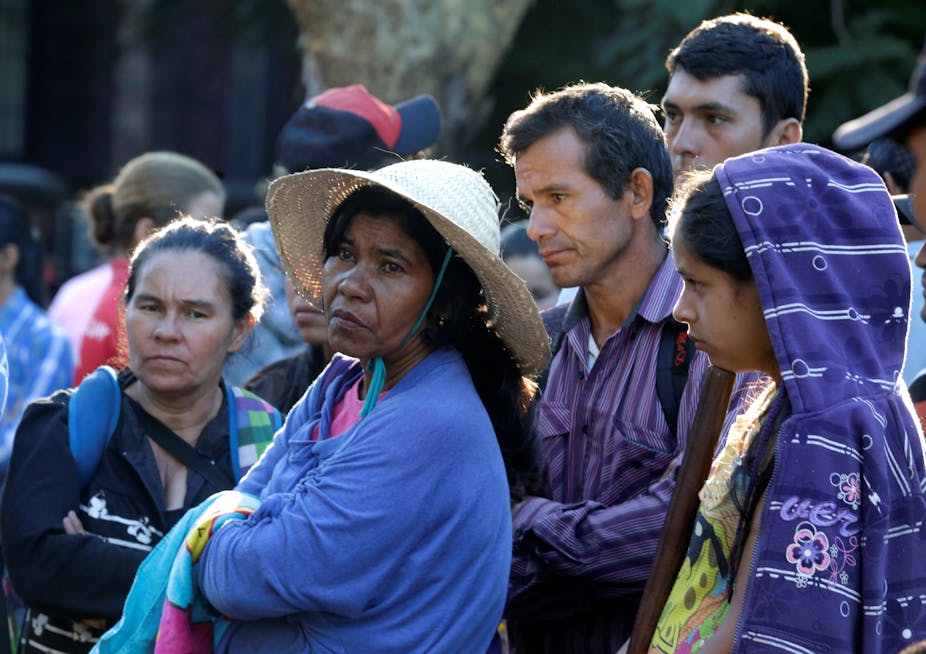In recent weeks, Paraguay has been shaken by a fierce parliamentary debate about a bill – recently killed off in the House of Representatives – that would have allowed presidents to be re-elected.
And although photographs of the Congress building in flames and the murder of a young protester by security forces drew international attention and clearly demonstrated the limits of Paraguay’s democratic system, political turbulence is just the most visible aspect of the deep economic and social problems facing this South American country.
Paraguay’s boom
The country’s situation could, in theory, be favourable. Paraguay is in the midst of a demographic boom that is transforming the shape of its population.
According to official projections, almost 60% of the country’s almost seven million people are between 15 and 64 years old. That means an extraordinary proportion of Paraguayans are of working age, and a relatively small segment, consisting of children and the elderly, is dependent.
Unfortunately, these statistical data do not imply an upsurge in productivity and economic growth; the country’s current economic structure does not have room for so many new workers. The Paraguayan government has yet to create a plan for integrating th, much less for putting in place differentiated pathways to employment for young people and vulnerable groups.
Without such policies, Paraguay’s demographic bump, which is projected to continue through to 2025, will have the opposite effect to creating an economic boom. It will deepen inequality and poverty, boost the informal economy and actually spur emigration.
Strong growth, weak fundamentals
After recovering from a deep crisis in 2012, the Paraguayan economy has actually been growing at a steady clip, with GDP rising by 4.7% in 2014 and 5.2% in 2015.
But structural weaknesses are apparent. The mainstays of the Paraguayan economy are commodities and hydropower, which accounted for 25.6% and 24.9% of its GDP, respectively, in 2015. After that comes the underground economy, Paraguay’s third most important economic sector, according to one Treasury Ministry official in an interview conducted by the author in 2010. This mainly comprises smuggling activities on different scales.
Despite a reduction in poverty, which dropped from 32% in 2011 to 22% in 2015, Paraguay is still one of the poorest countries in Latin America. It ranks fourth in extreme poverty, after Honduras, Guatemala and Nicaragua, according to a 2016 ECLAC report.

Inequality is also widespread. Though the country’s GINI coefficient, which indicates economic inequality, has dropped from 0.5124 to 0.4714, there’s still a significant gap between rich and poor Paraguayans. According to the General Statistics Surveys and Census Bureau (DGEEC), the poorest 40% of Paraguayans pocket only 12.5% of the nation’s revenues, while the richest 10% earn 37.1% of all income.
Finally, there’s underemployment, which hovers at 19% (only 5.34% of Paraguayans are fully unemployed). Among the 3.3 million people nationwide who have jobs, 664,000 either work less than 30 hours per week “but would like to work more, and are available to do so”, according to the above-mentioned DGEEC bureau. Or they work 30-plus hours but are paid less than minimum wage“.
Rural exodus
In rural parts of the country, these economic weaknesses are magnified. Unemployment for urban men can reach 55.12% in some areas, but it’s 64.19% in rural zones. Wages are also notoriously lower in rural areas – even bosses earn less.
The rural-urban economic gap is the result of large-scale agriculture steadily eating away at small-scale farming in Paraguay. And it is increasingly prioritising high-tech monoculture enterprises.
Today, 90% of the land belongs to just 5% of landowners.

Thanks to a surge in inflows of transgenic crops since 2012, agri-business revenues have multiplied in Paraguay.
In late March, about a thousand farmers converged on Asunción in an annual march, demanding across-the-board agrarian reform. The protesters called for debt forgiveness for small farmers and condemned the widespread concentration of rural resources.
Studies have confirmed that between 1991 and 2008, when the last National Agricultural Census was conducted, the total amount of productive land in Paraguay fell by some 5.7%. The number of farms and homesteads covering less than 100 hectares has shrunk, while those between 100 and 500 hectares has risen by almost 35%, and massive plantations covering more than 500 hectares are up by almost 57%.
Farmers’ deepening marginalisation in the countryside has made city living more attractive.
Asunción, the capital, has grown steadily, from 388,958 people in 1972 to 515,587 in 2012. Some 37% of the nation’s population is now concentrated in the city and the surrounding Central Department area.
Although complete official accounting of informal settlements are not available, the National Housing Bureau, SENAVITAT, estimates that the region now has some around 1,000 slum areas.
Though wages are higher in the city, Paraguay’s labour market usually makes it hard for rural migrants to find jobs, so new arrivals often face underemployment, temporary joblessness or longer-term unemployment.
The democratisation debate
Underemployment and rural poverty are fuelling Paraguay’s current turbulent politics, highlighting a critical question that was first debated during South America’s democratic transitions in the 1980s: can political democracy truly exist in countries that haven’t also attained economic and social democracy?
Some thinkers claim that economics and politics are independent dimensions, and that the social rights can be enshrined after democracy is established.
More critical – or less optimistic – political scientists contend that, to the contrary, there can be no real democracy if it’s not accompanied by the steady spread of social and economic equality.
For Paraguay, the latter hypothesis has won out.

Paraguayan democracy is so lacking in social components that it has become a shrunken version of government. It consists almost exclusively to ensure that institutions function, elections are held regularly and transparently, ballot-box outcomes are accepted and, above all, that the population accepts the nation’s entrenched economic structure.
This is not really democracy.
What’s more, a steady stream of scandals has revealed widespread fraud and corruption, and there are deep-rooted processes of political and economic exclusion.
No matter who runs in the 2018 election, it will be merely a fiction of democracy – a mechanism that serves to continue the systematic uprooting of farm families for the benefit of agribusiness and bolstering an urban economy that pushes workers into underemployment or into the informal sector.
Until social justice, equality and rights are brought into politics, Paraguay’s turbulence can be expected to continue.

